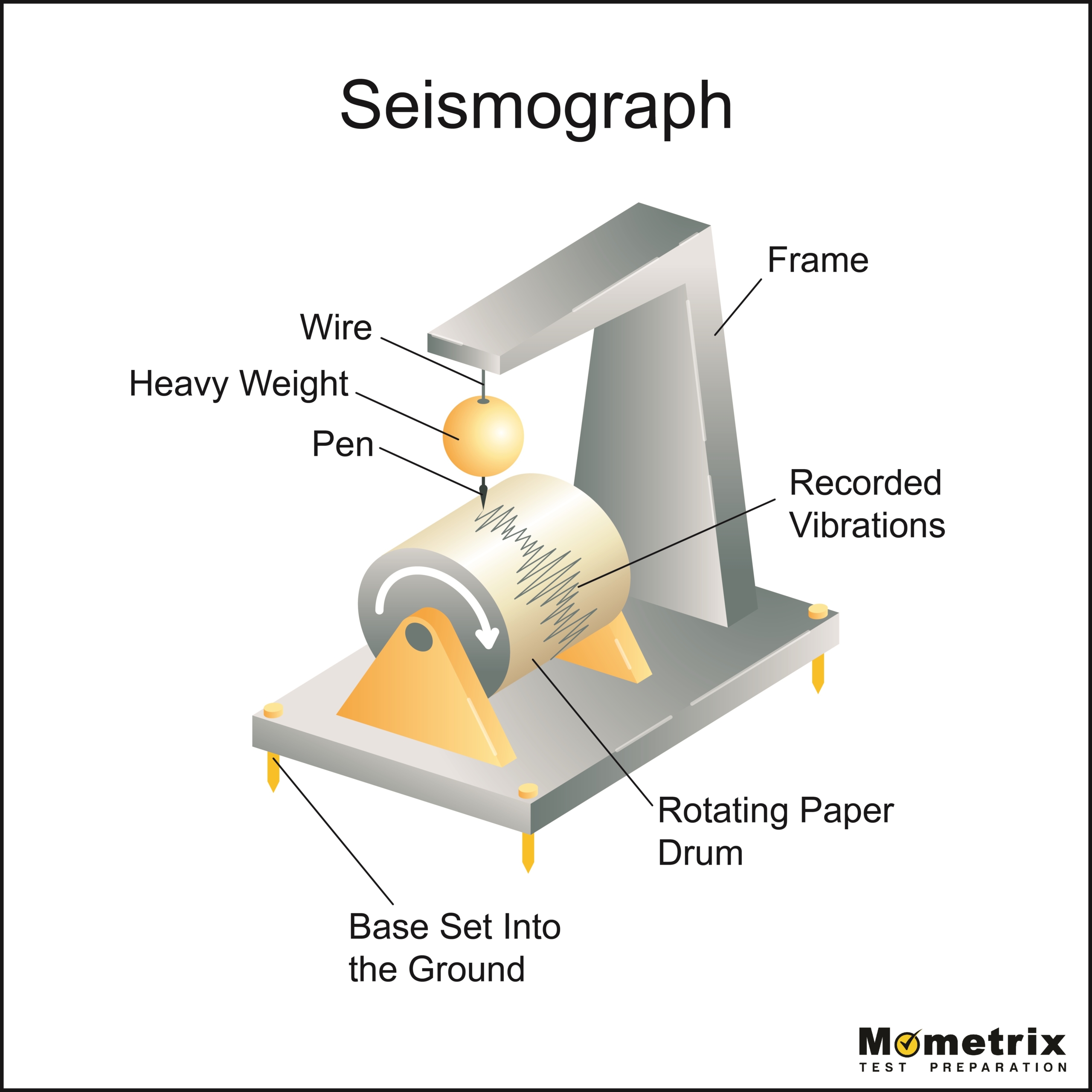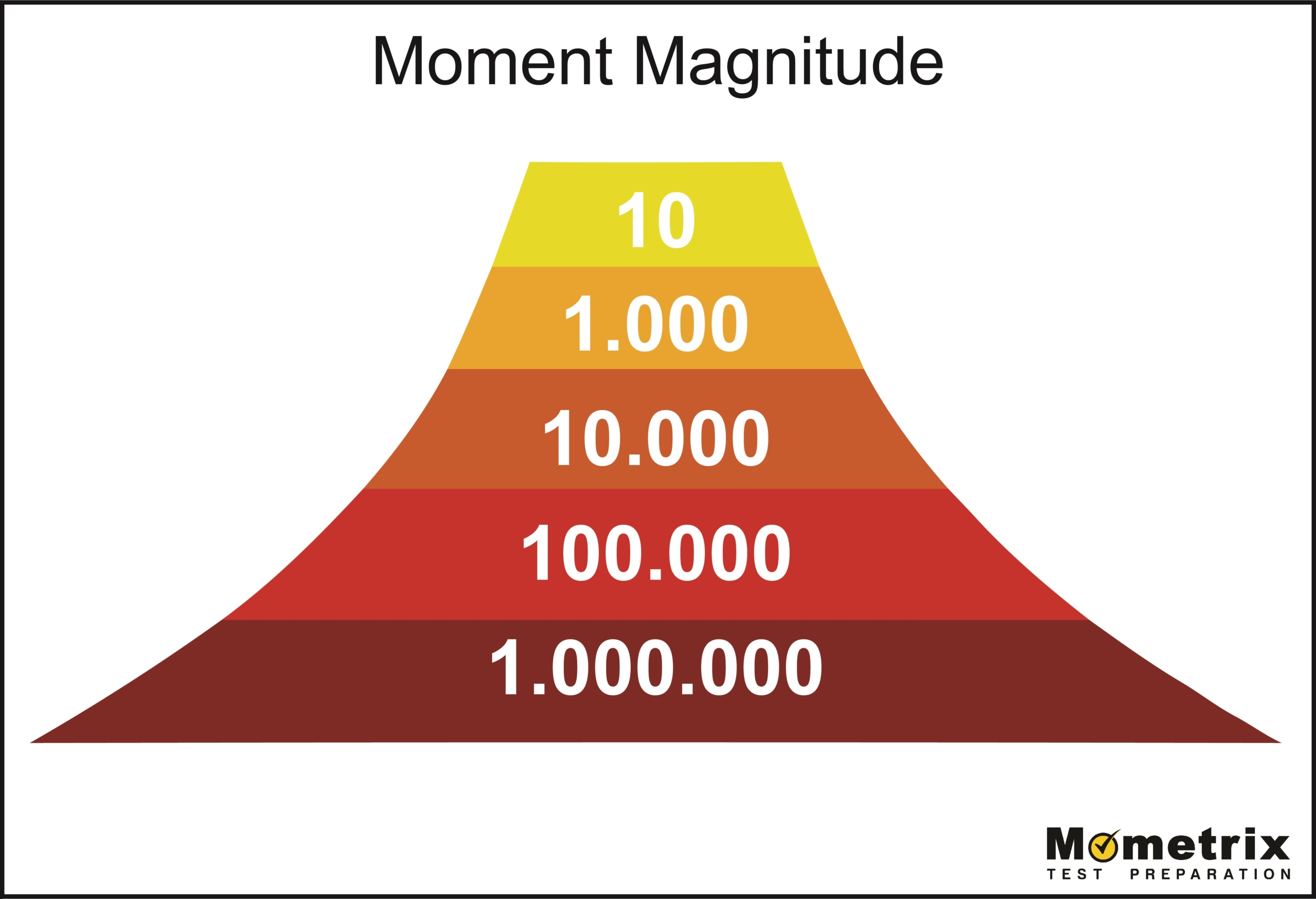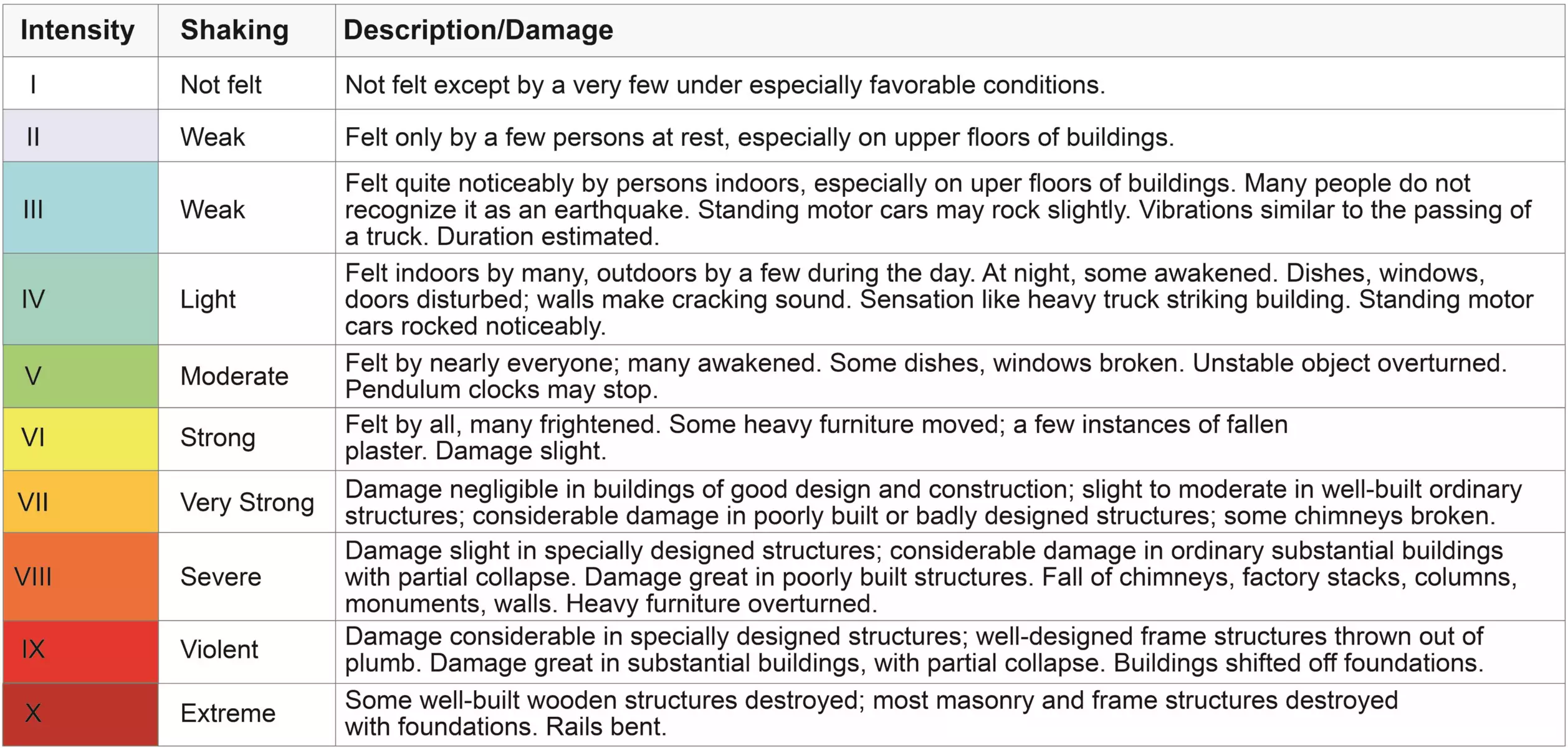
Natural forces are fascinating events to observe and measure. Have you ever wondered how an earthquake is measured or whether or not scientists can predict them?
Welcome to this Mometrix video lesson on measuring earthquakes!
Tectonic Plates and Seismographs
But before we talk about measuring earthquakes, let’s define them. The earth is composed of several layers, some of which are called mantles. The outermost layer is called the lithosphere, and the outermost layer of the lithosphere is the crust, which is what we stand on every day.
The tectonic plates are part of the lithosphere. If you want to learn more about tectonic plates, check out our video on them! These plates are constantly moving and rubbing against each other. Sometimes, the force and friction become bad enough and cause an earthquake. The specific place where the plates meet and cause the earthquake below the surface of the earth is called the hypocenter. The epicenter is the location on the crust directly above the hypocenter.
When this happens, seismographs are alerted of the disturbance. A seismograph is a group of sensors that record and determine the size of earthquakes.

In other words, this tool is used to determine the magnitude of an earthquake. Magnitude is the measure of energy released at the core of the earthquake; It is the distance from the seismograph and ground motion from the earthquake. When an earthquake occurs, seismic waves move through the earth; their vibrations cause the scroll of paper to move on a seismograph while the weight and pen remain still. The marks produced are created by the vibrations from the seismic waves made by the earthquake. Here is an example of a measurement of the magnitude of a seismic wave-the energy released from the plates shifting.
Without realizing it, you probably know about moment magnitude. Moment Magnitude is a measuring tool that assigns a number for the total energy released by the earthquake.

These are the numbers made aware to the public to determine the size and intensity of an earthquake, i.e. magnitude 6 or magnitude 7.7. For each whole number measured on the scale, there is about 30-31 more times the energy released than the previous whole number measured. Fun fact, an earthquake must be of magnitude 2 or higher to be felt by someone standing outside. Sometimes, earthquakes at or below a magnitude of 3.5 will still use the Richter Scale for taking measurements. The Richter Scale is an otherwise outdated measurement system due to its inability to measure very large earthquakes. In addition to measuring an earthquake’s magnitude, we can also measure its intensity.
Modified Mercalli Scale
The intensity of an earthquake is the strength of the shaking caused by the earthquake. Intensity is measured on the Modified Mercalli Scale.

This is a scale that is based on effects observed from the earthquake and to what degree those effects are felt. It ranges on a scale from 1 to 12, one being the lowest effects and 12 being total loss. Rather than plugging numbers into logarithms, an earthquake’s intensity is relative to someone’s or something’s distance from the epicenter of the earthquake when it occurs. This means that you could get different intensity measurements depending on where you take measurements from. Type of soil on which a person or thing is standing during the time of an earthquake also plays a huge factor in determining its intensity. Softer soil shakes more violently than firmer soil. Here’s an image that shows the locations and intensities of earthquakes, magnitude of 6.0 and higher, that have occurred between 1900 and 2017.
If you thought this lesson landed a 10.0 on the magnitude scale, then be sure to “like” and “subscribe” to our channel for more groundbreaking lessons! Happy studying!
